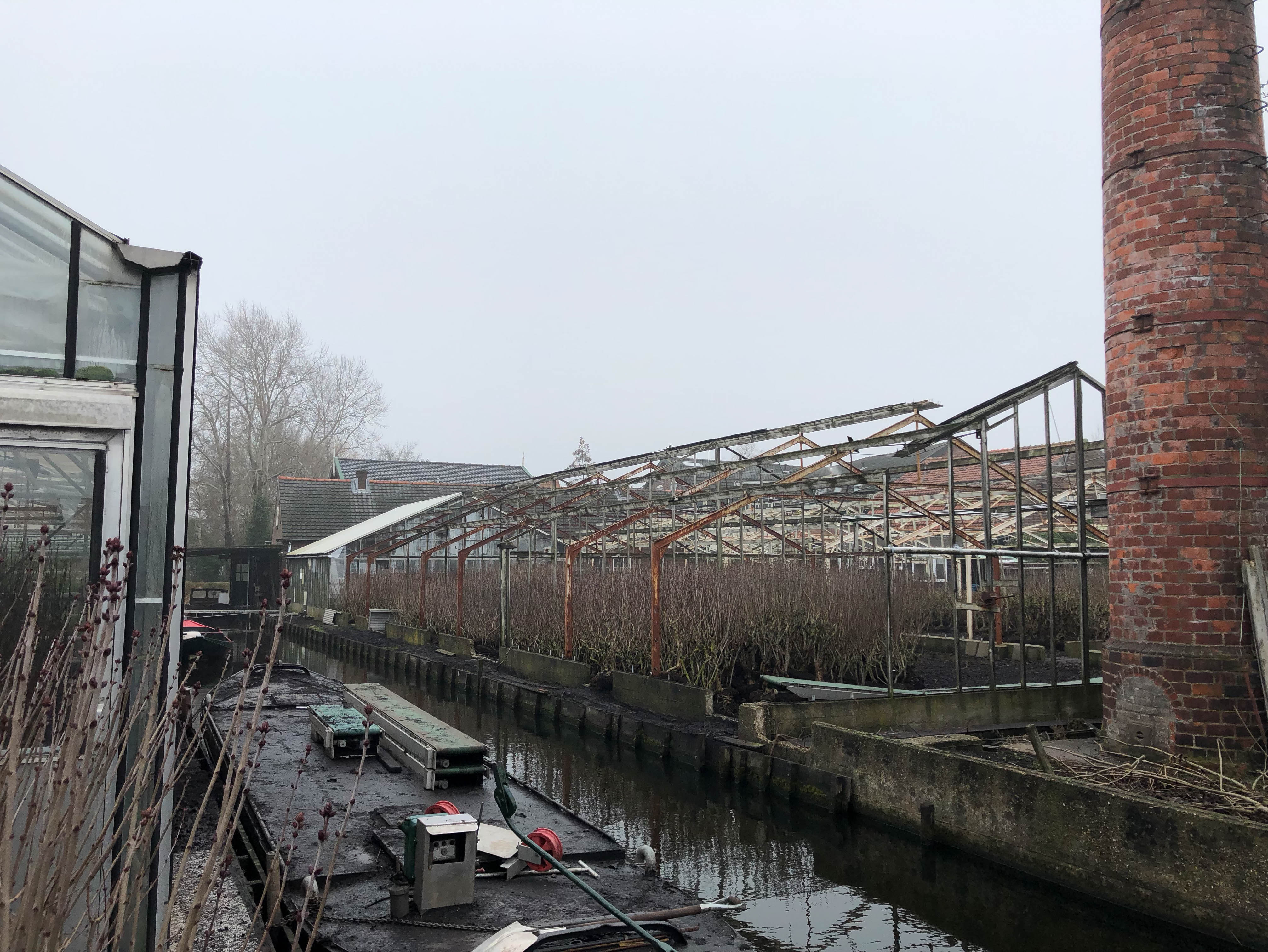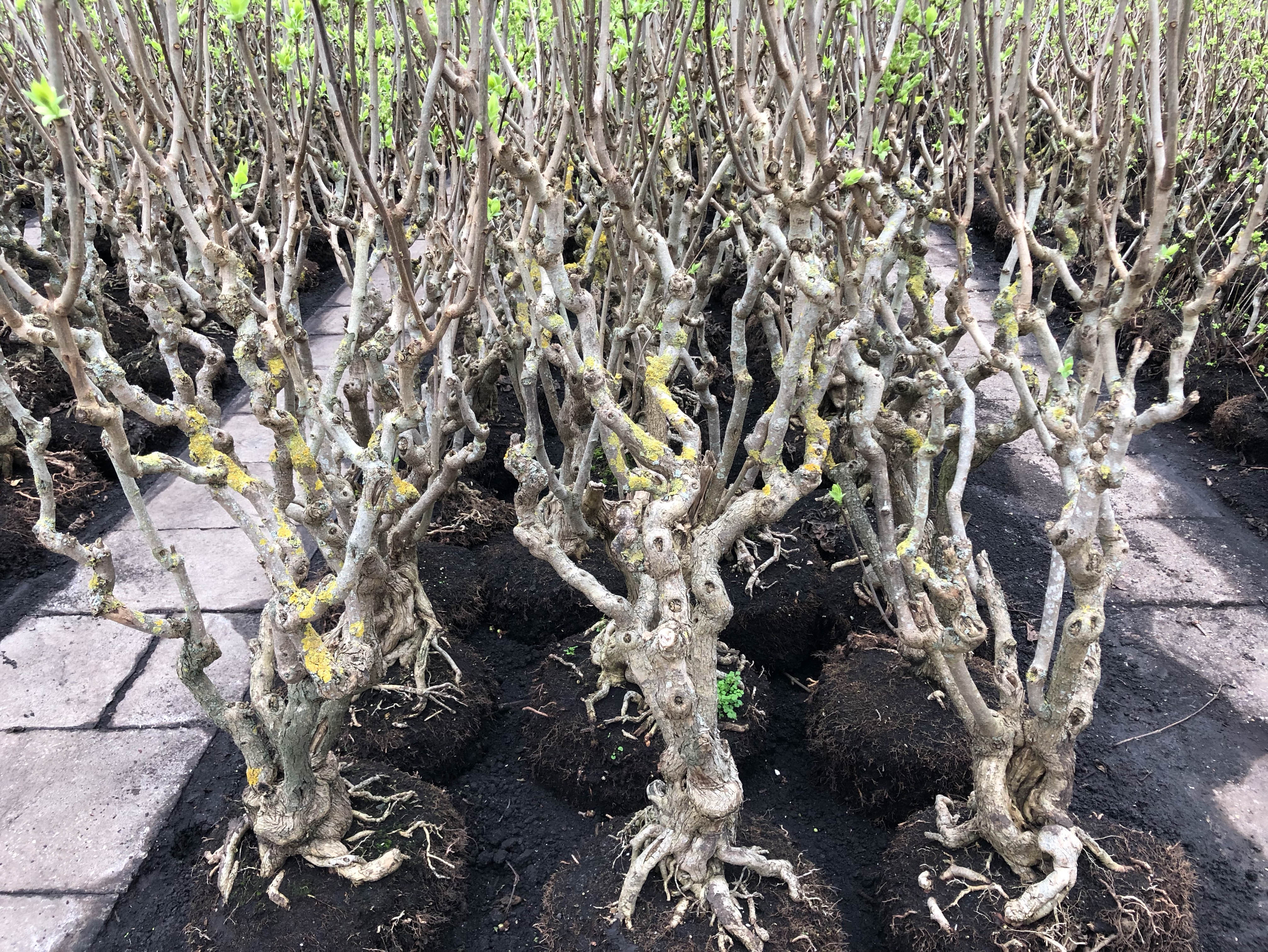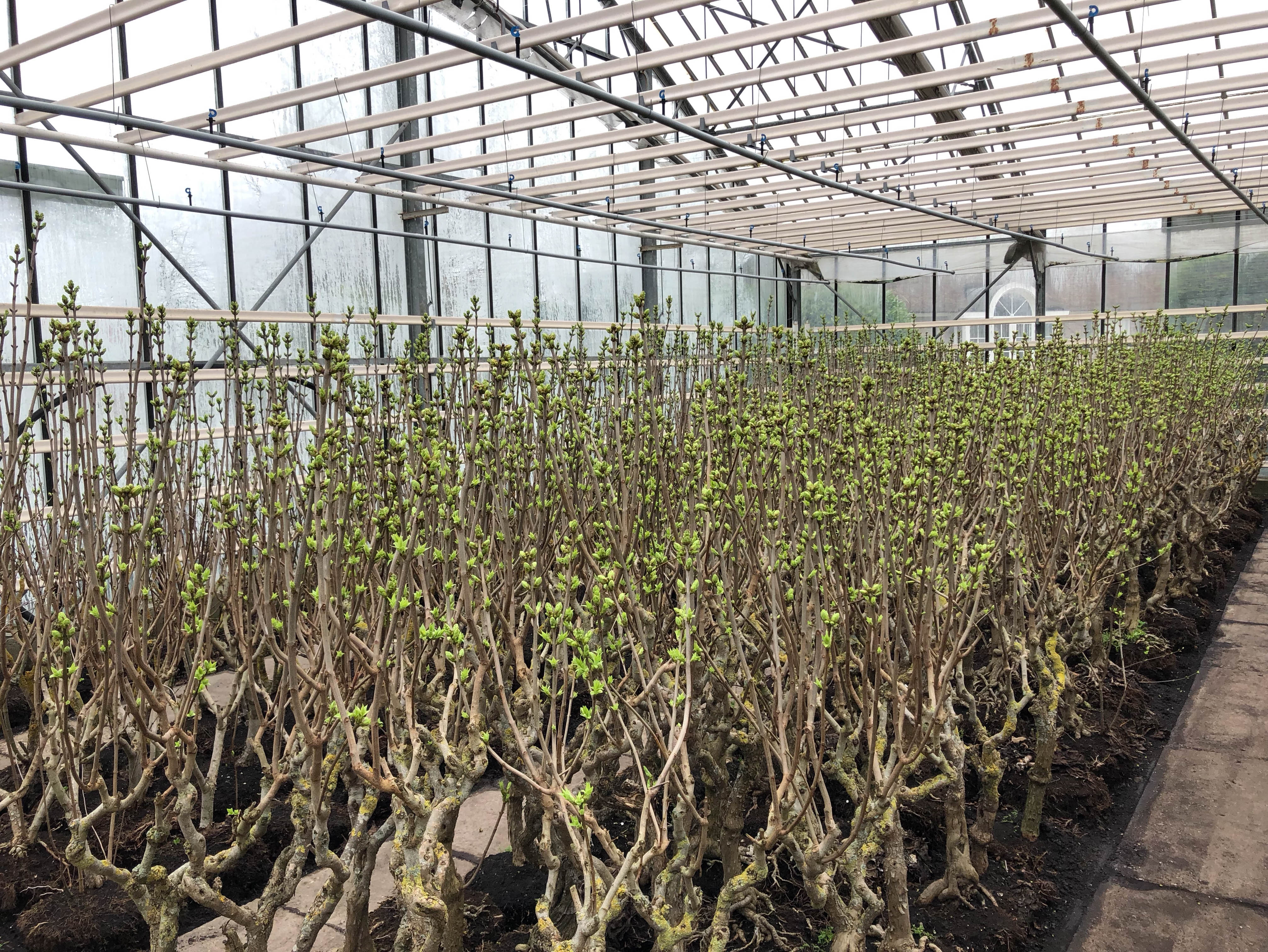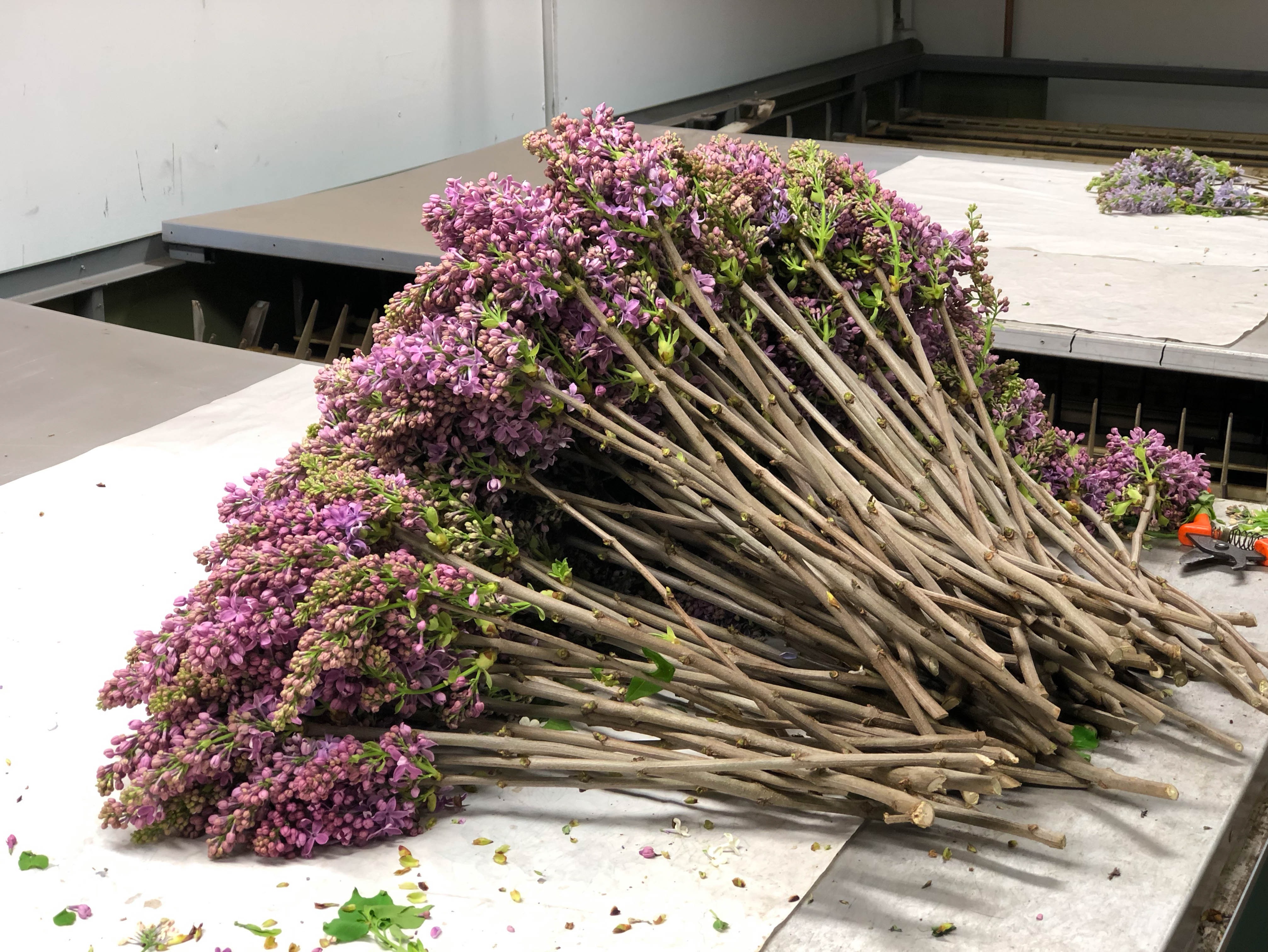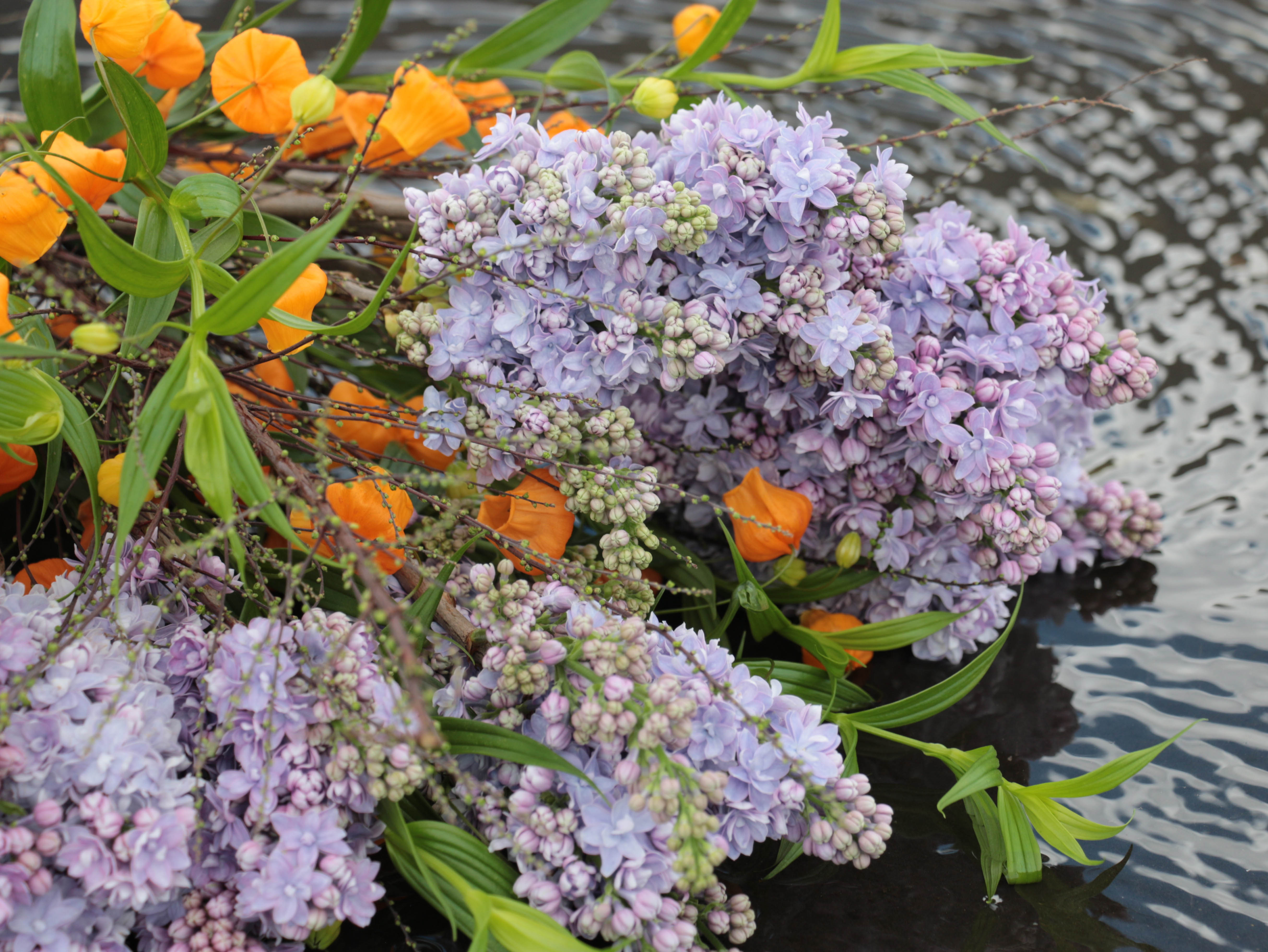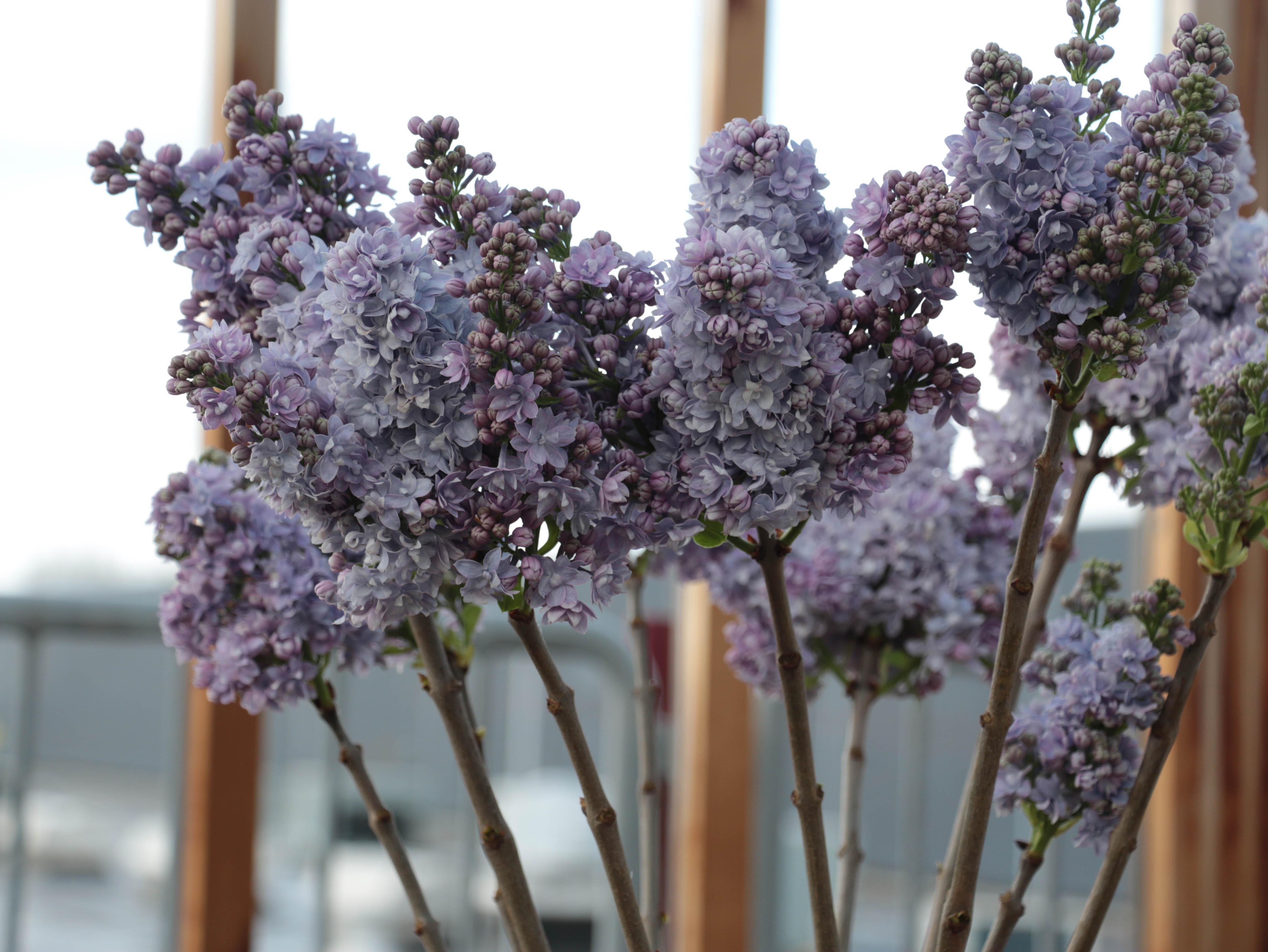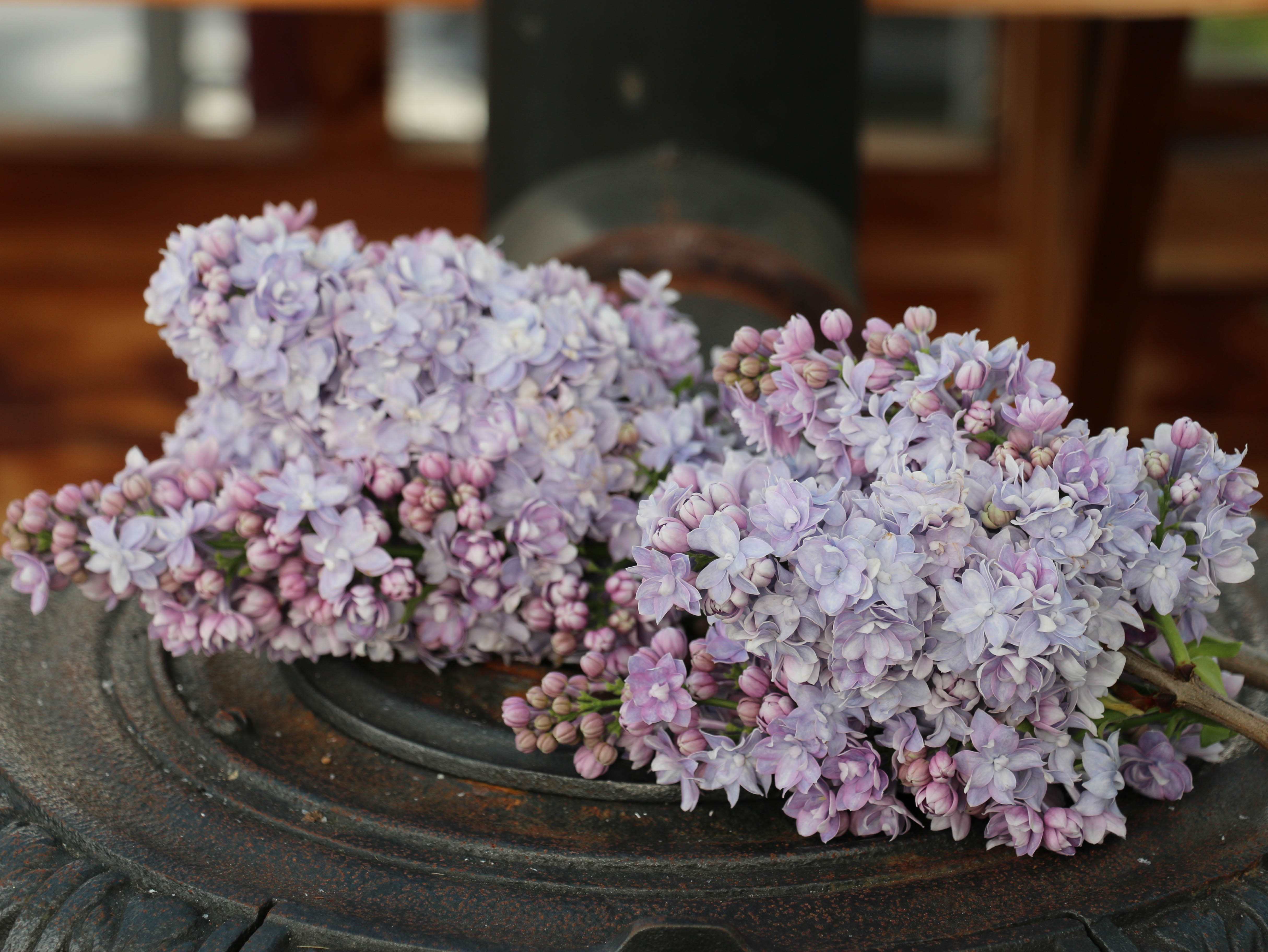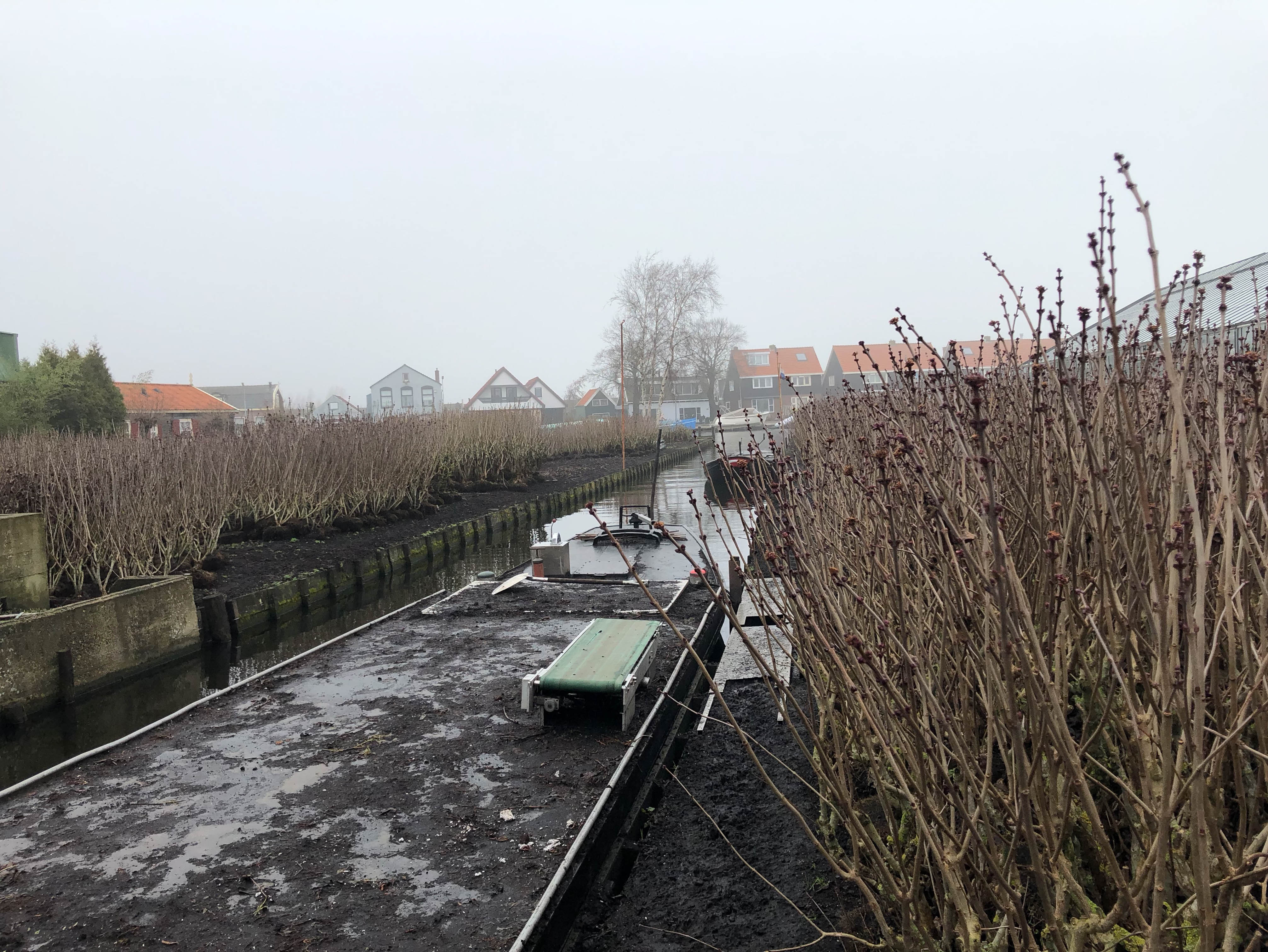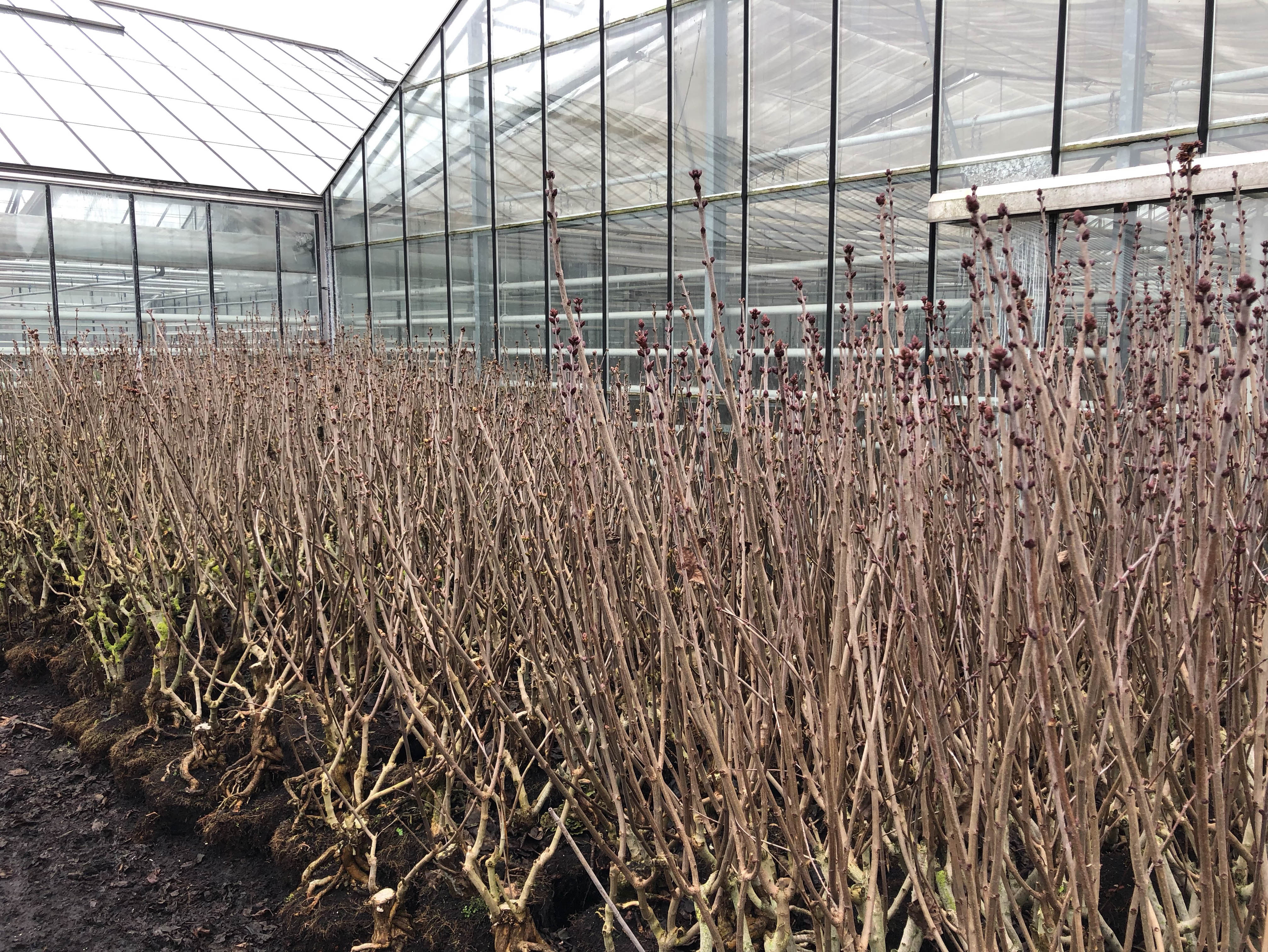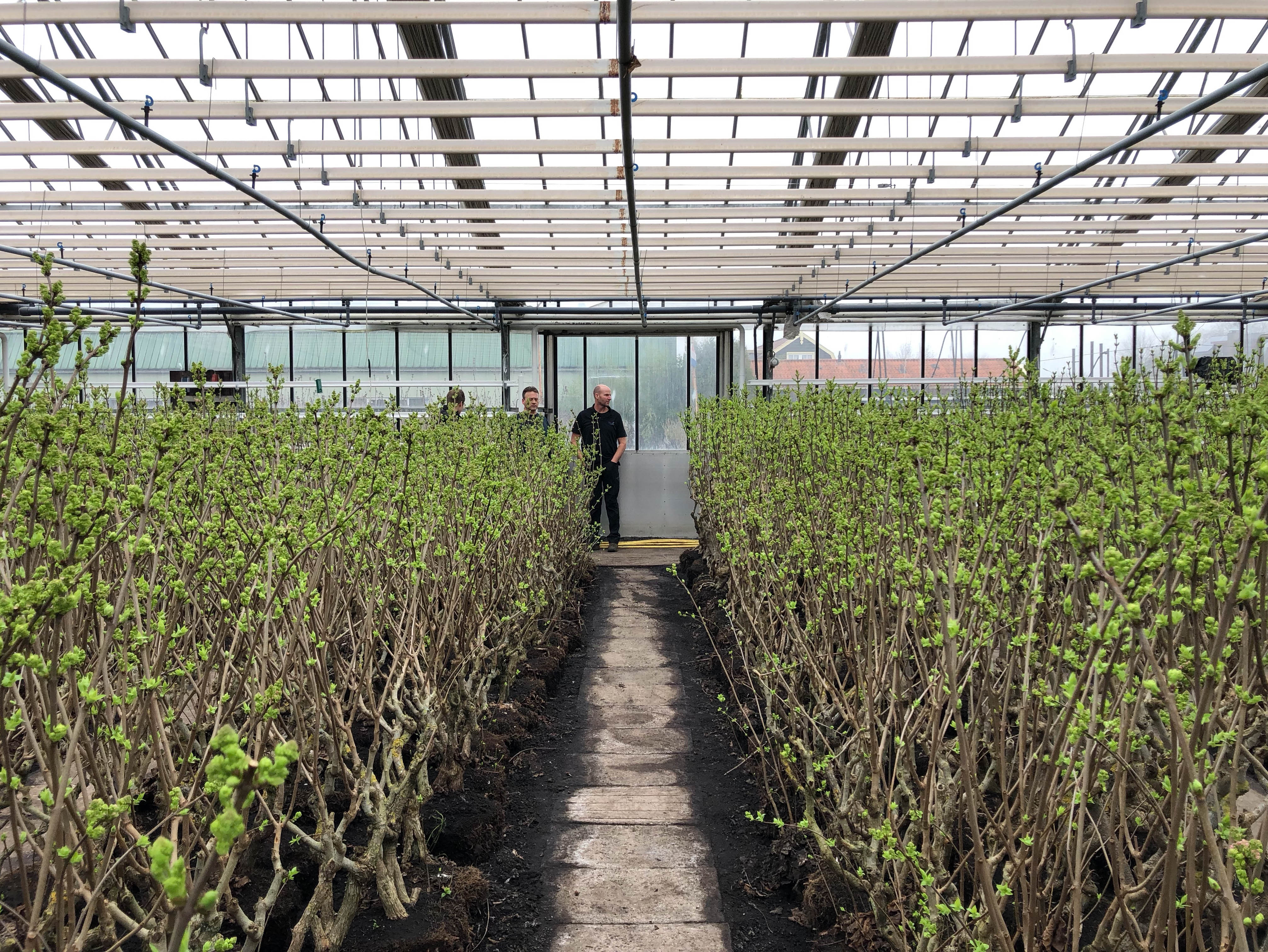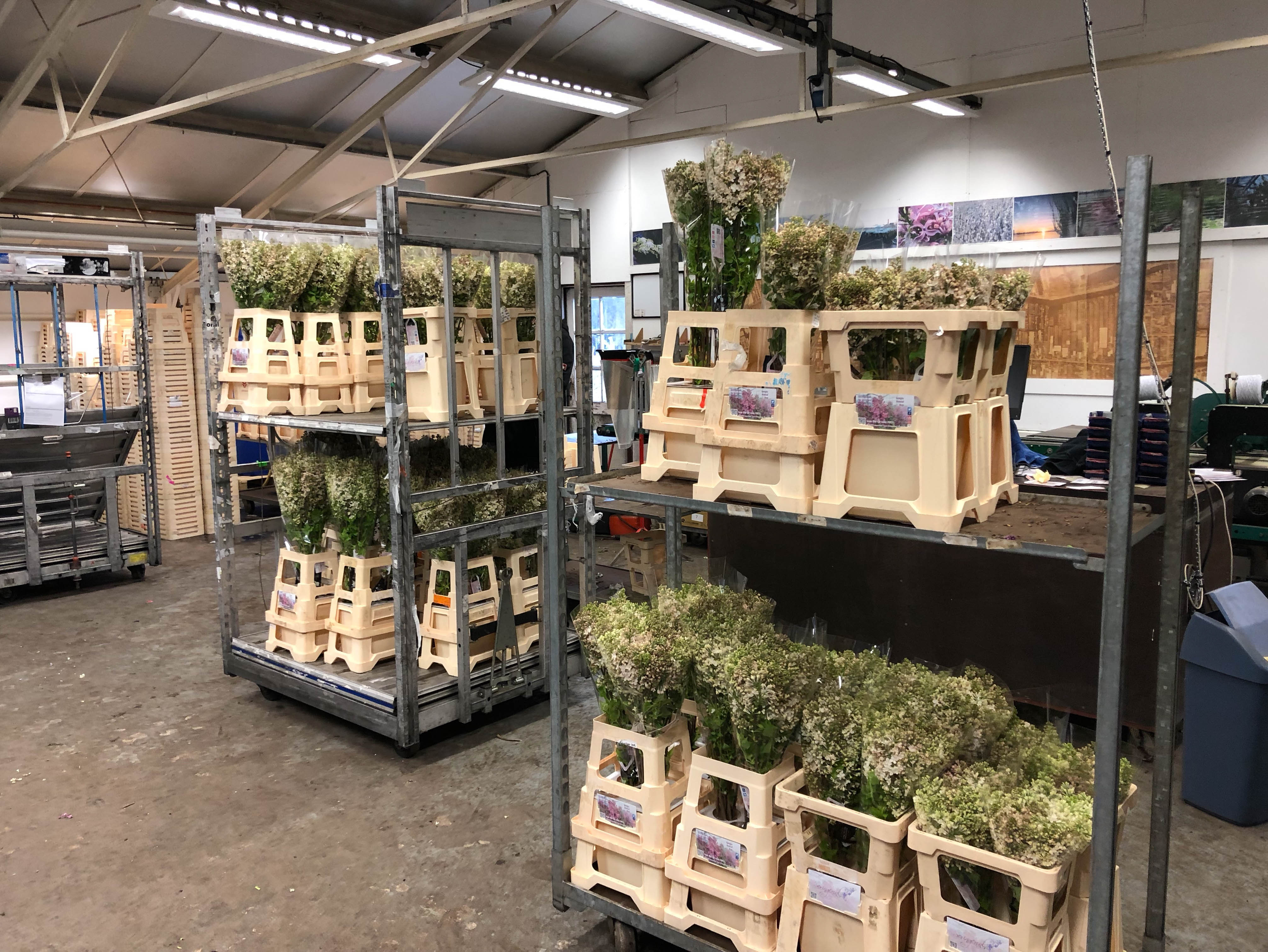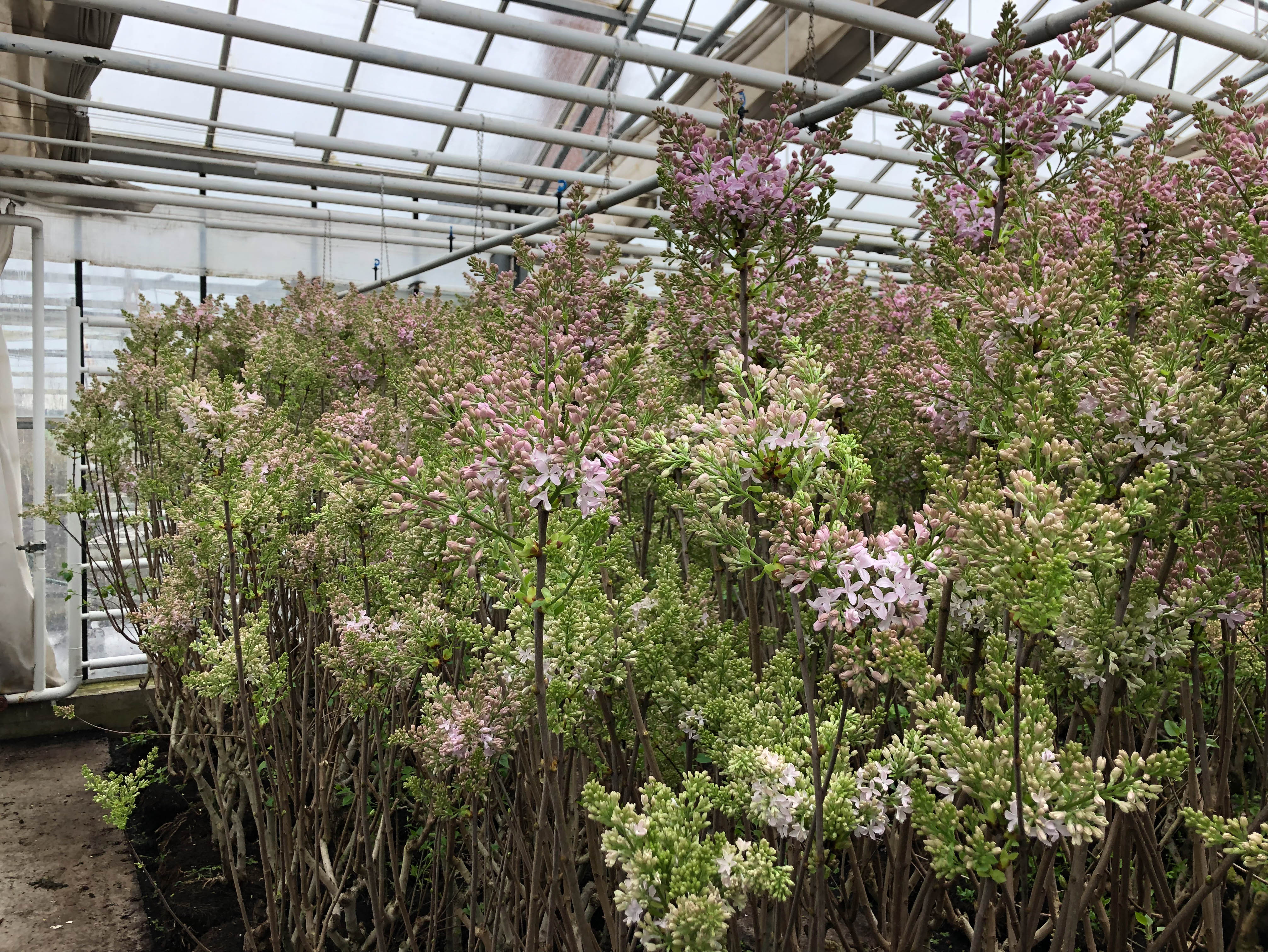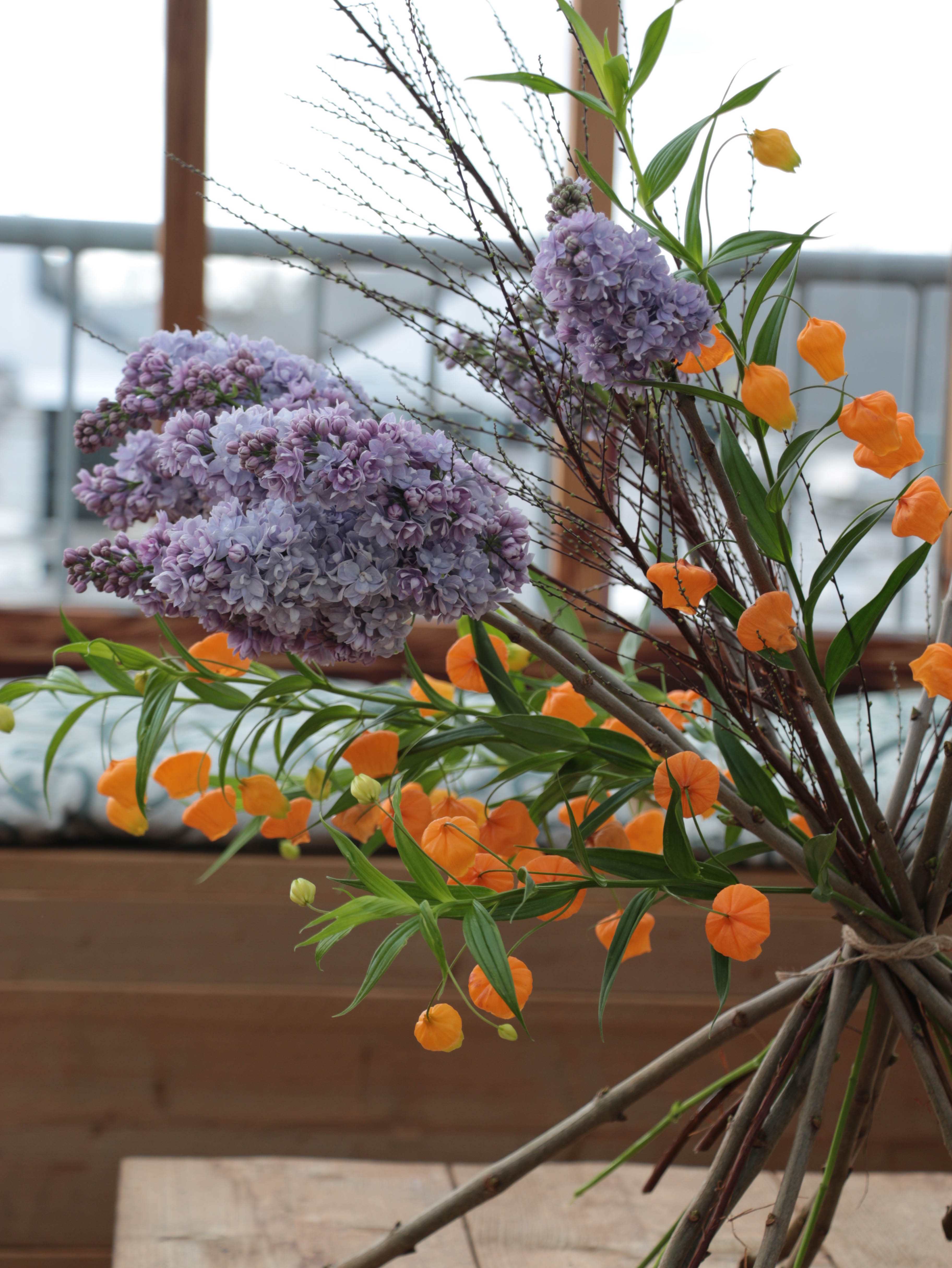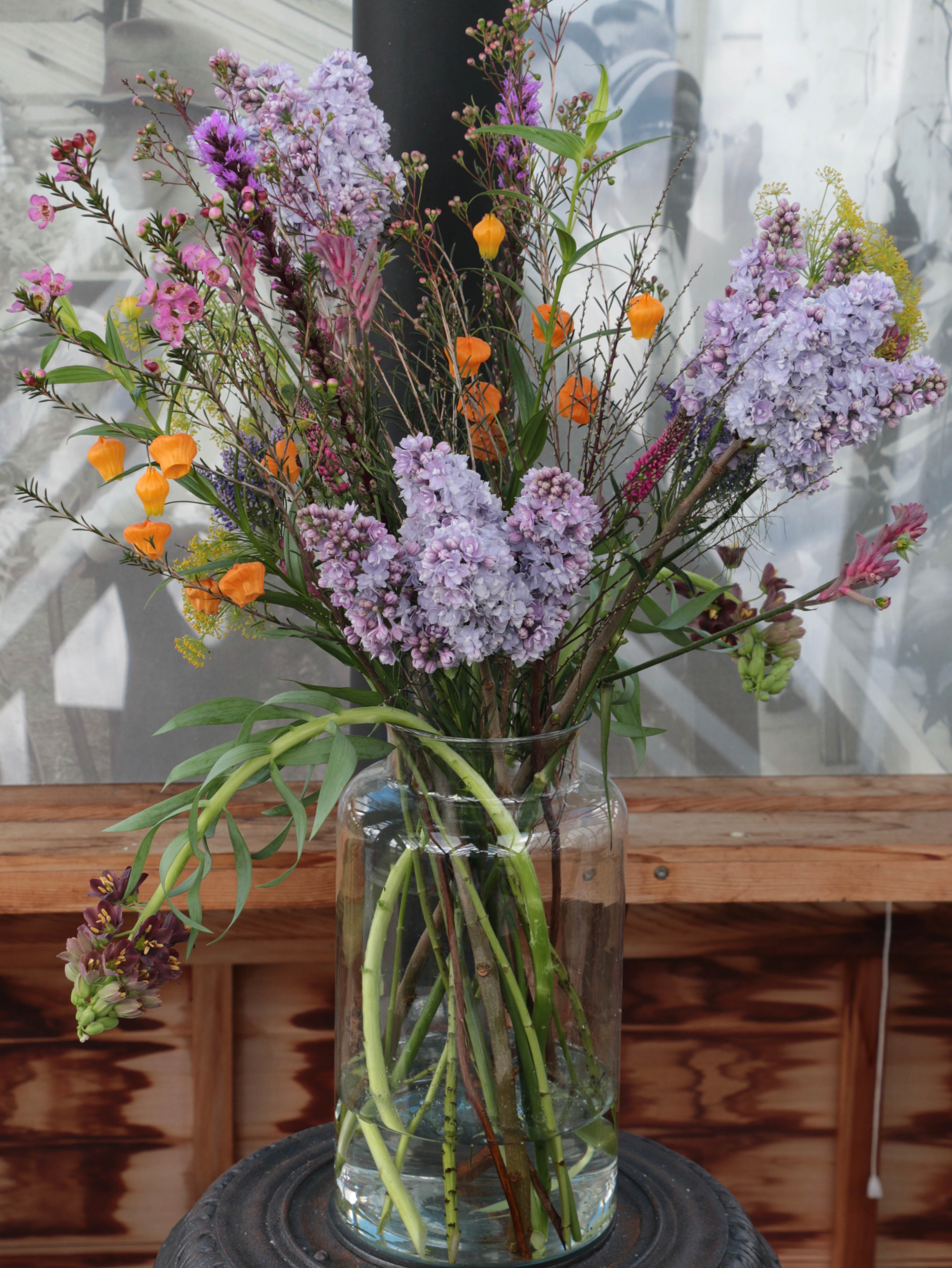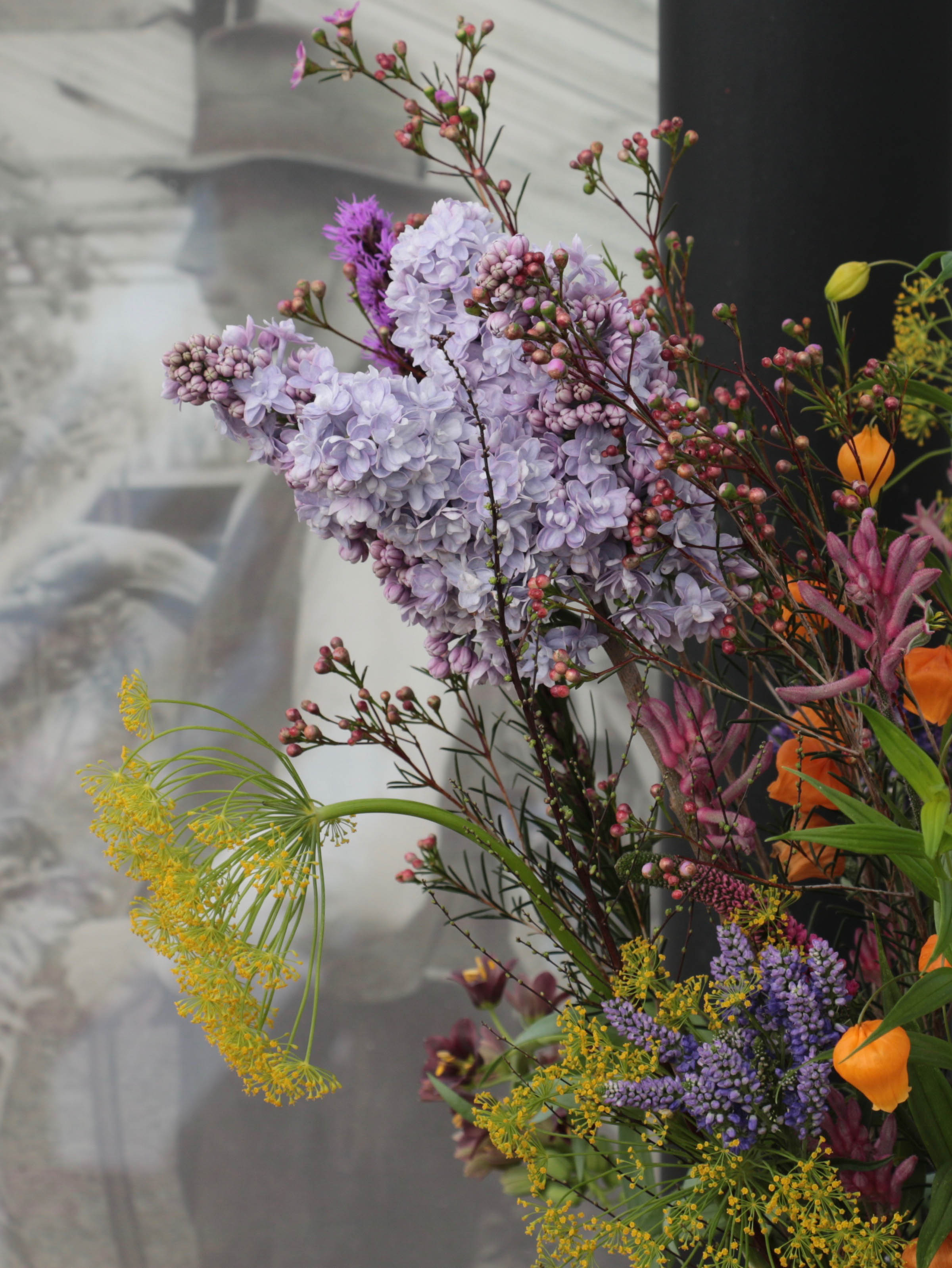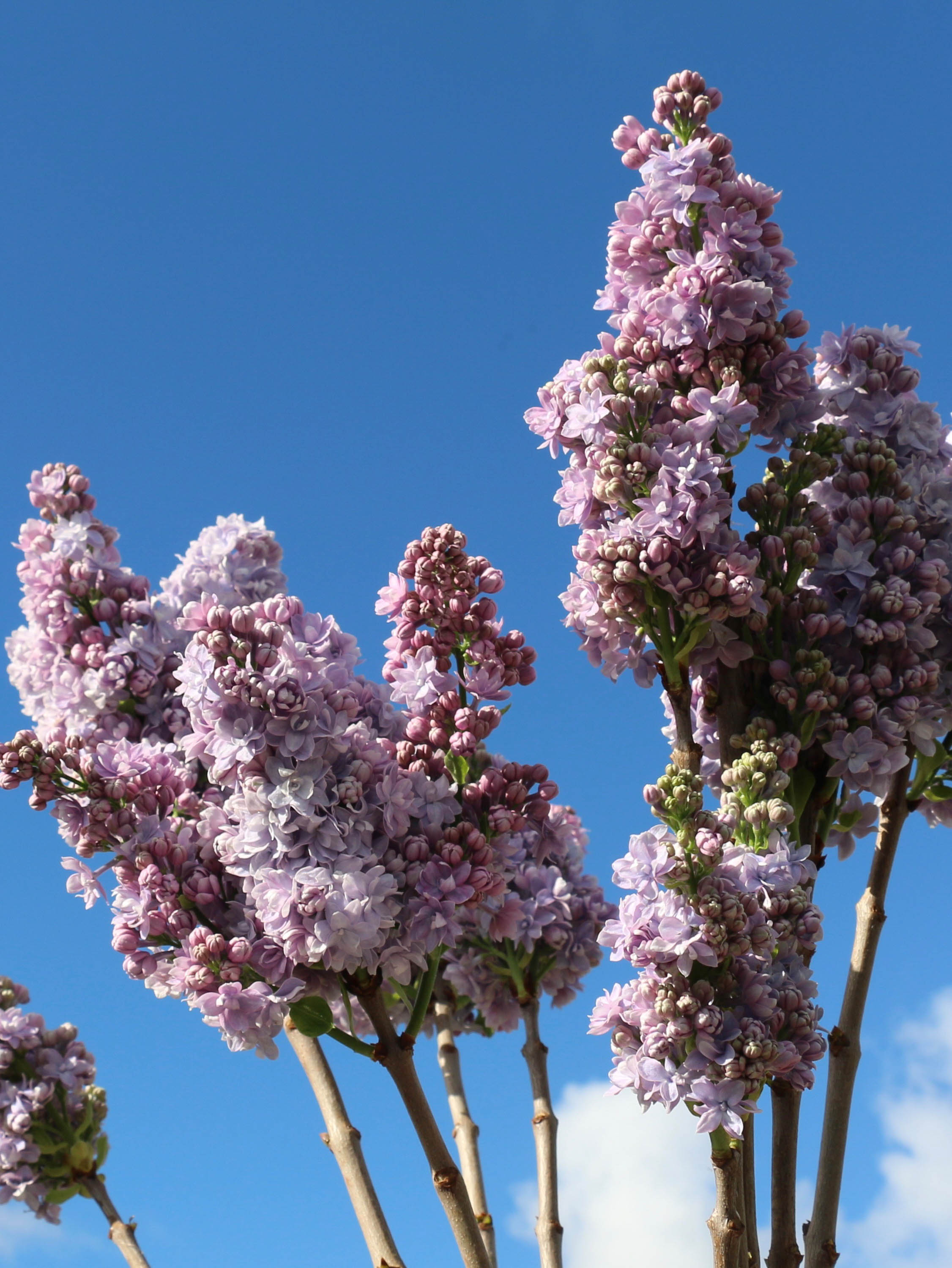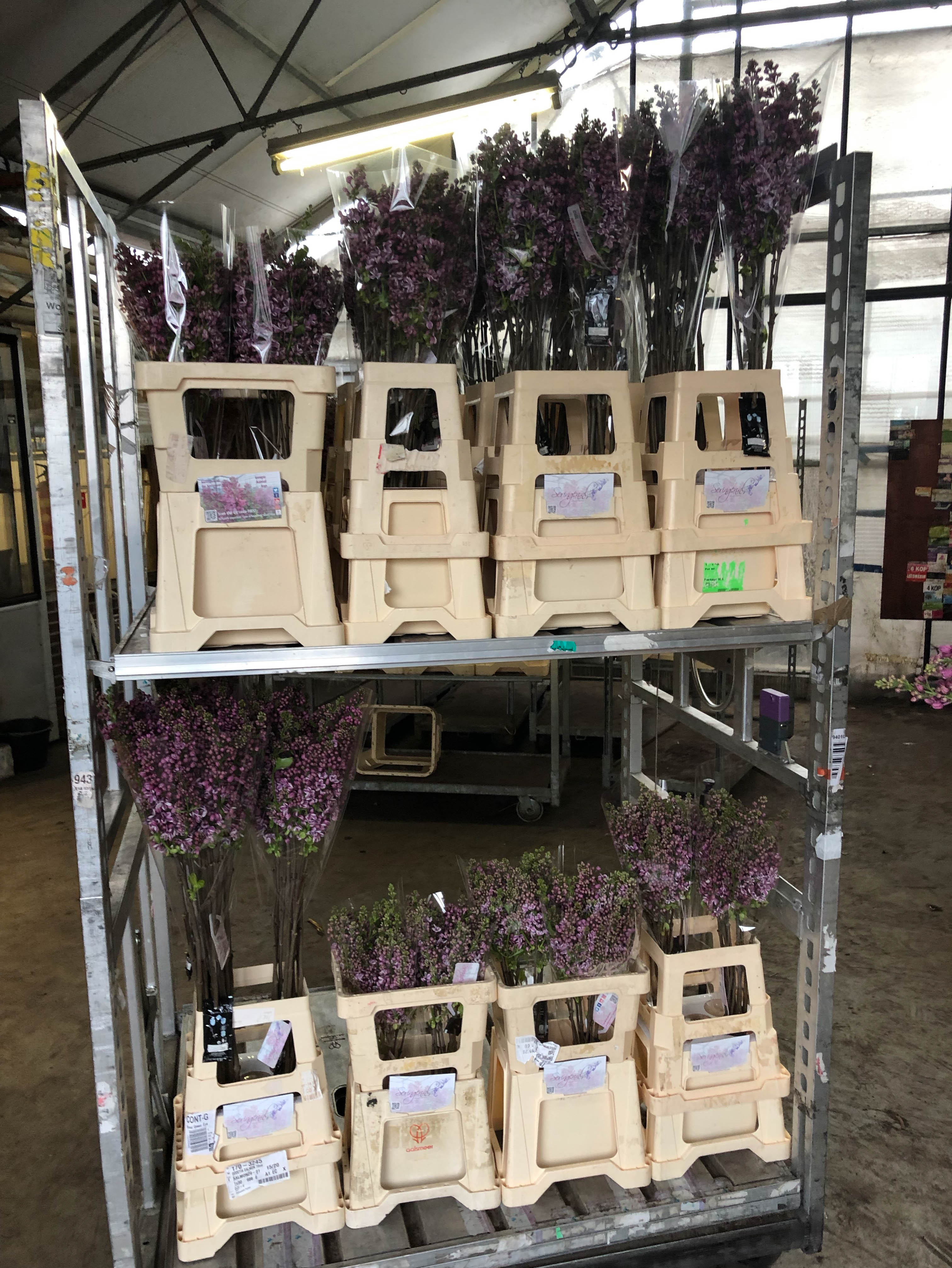This week at FloraPodium
Syringa vulgaris 'Michel Buchner'
Calendar
De Syringa vulgaris 'Michel Buchner' is available from February till the beginning of April.
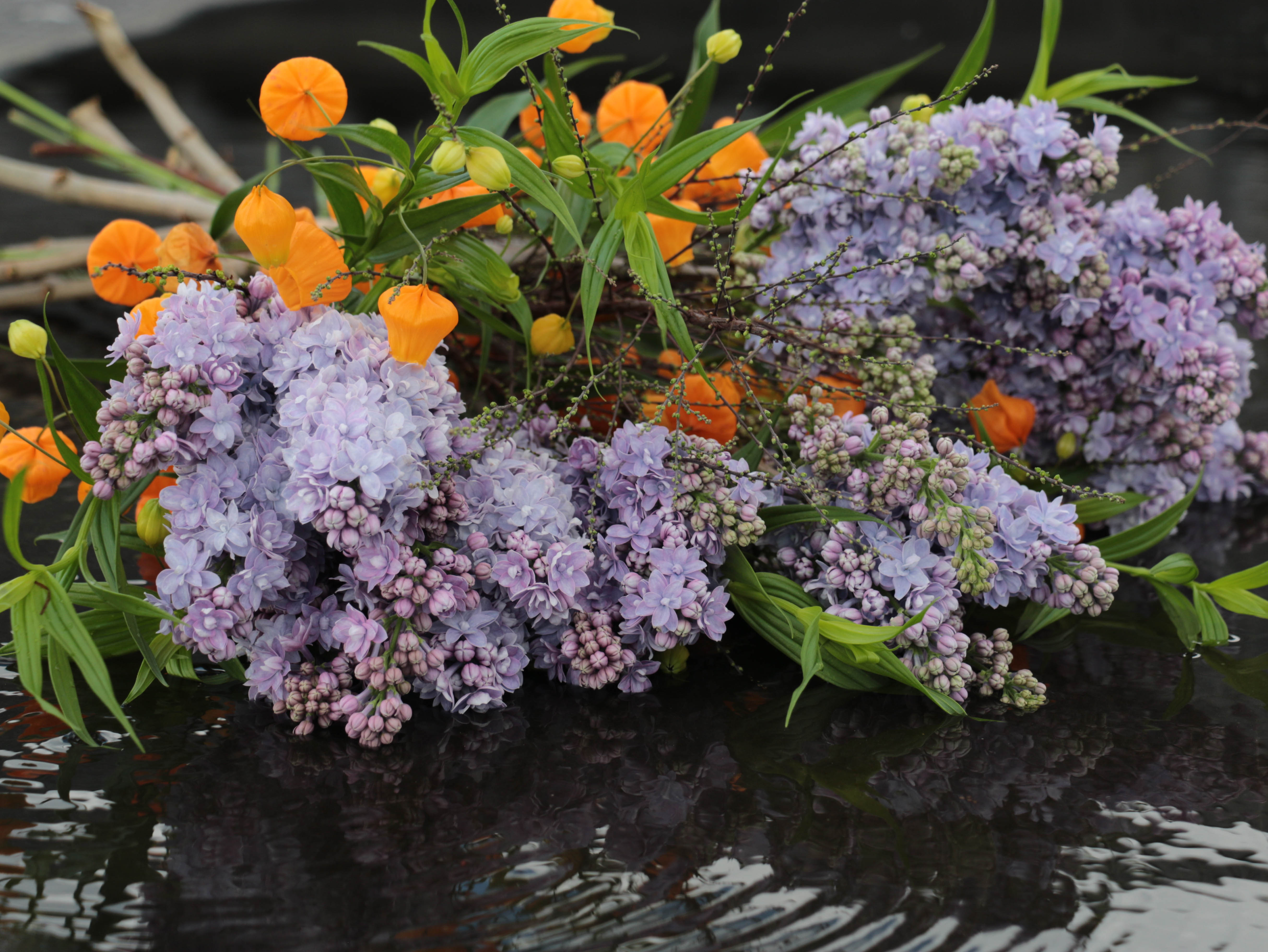
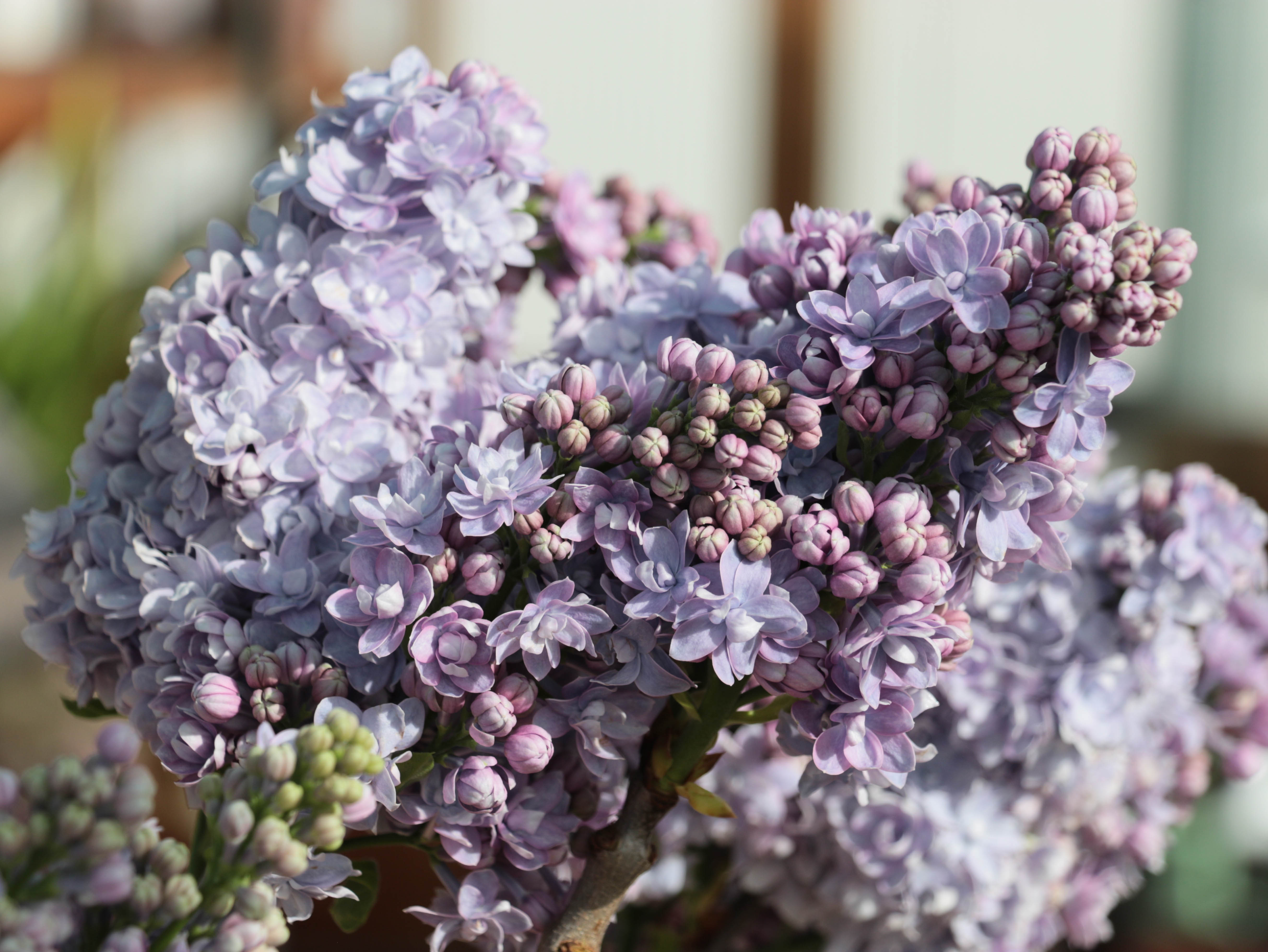
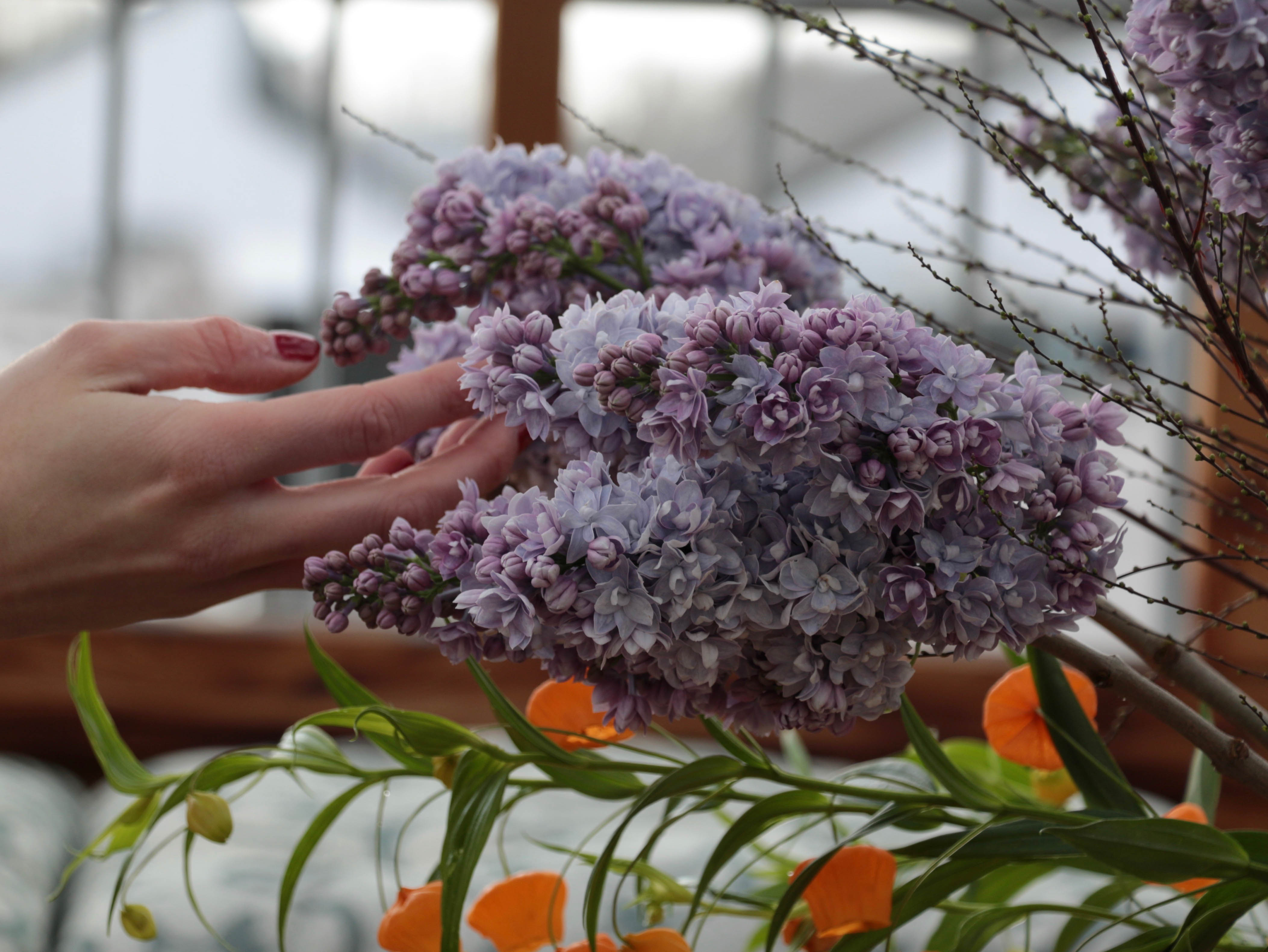
In the spotlights
This year we visited nursery "De Seringen Specialist", at the auction better known as ‘seringenspecialist.nl. Owner Jan ten Hoeve has specialized in the cultivation of different types of lilacs. These 'pearls' as Jan likes to call them are an old traditional Dutch flower product!
The craft of growing lilacs
The nursery used to be called Klaas Joren Gzn. Jan and Klaas have owned the company since 1996, but since January 1, 2018, Klaas has stopped as an entrepreneur. A new name came with this change. Klaas Joren Gzn. became De Seringen (Lilac) Specialist. The name says everything about the feeling that Jan wants to convey and how he sees himself in ‘Lilac land’. Jan says: “As an entrepreneur I have been working for more than 20 years to make the lilac cultivation visible to all people in the flower world. I have a website where I share the story behind the lilac. With this I try to tell the story behind the lilac, which is, I believe, the best way to sell lilacs. I am aware of the fact that we, as lilac growers, have a ‘pearl’ in our hands in today’s global overproduction. I just want to give the ‘pearl’ even more shine by promoting the craft and the emotional experience. "
"Lilacs do not come from large-scale flower factories, but rather from very small specialist companies, which you can actually compare to passionate one-man businesses," Jan tells us about his profession. In order to convey that craft to the general public, he is very active in social media, magazines and TV programs telling his story.
Buchner
To grow lilacs you have to be very patient. After all, it takes at least six to seven years for a young plant to make its first trip to the greenhouse, where it can be forced to bloom. A 15-year old bush is only profitable if you look at the work done and the yield that this bush generates. The advantage of a lilac bush, on the other hand, is that they can live to be over 100 years old. This allows the bushes to be passed on from generation to generation. Jan grows many special types of lilacs on a small scale. They are special because of the inflorescence, being double-flowered, because of the color or, on the other hand, a particularly large flower nail (that is what they call the single flower of the flower cluster) or special because of the strong but very pleasant fragrance.We noticed the Syringa Vulgaris "Michel Buchner", a double-flowered ‘Milka-colored’ flower with a good vase life. You have different kinds of Buchner, but this one really stood out with its color! This variety is grown from the beginning of February to the beginning of April. The variety is lavender purple with a touch of blue. De Buchner is not easy to grow at all, but Jan does like a bit of a challenge. He therefore tries to look for varieties that are difficult to grow, but have a good quality. This way you remain distinctive as a specialist!
Care
A lilac branch can flower in a vase for up to two weeks, provided they have been put in the vase the right way. Always use special cut flower nutrition in the right proportion. Without cut flower food, a lilac will start to wilt in one or two days. Too much food in the water causes the flowers to burn and therefore to wilt as well. Also top up the water in the vase with water and food on time. This way you limit the growth of bacteria and the vessels in the branch remain open to be able to transport water to the flower. Lilacs have to drink a lot of clean water to fully blossom in the vase.

The cultivation
You will find lilac bushes in many gardens around the world. The shrubs can grow up to four meters high and give off a wonderful scent during flowering. The journey for the cultivated bush from greenhouse to field is quite an impressive process however. This 2-year cultivation, in which the use of a boat is elementary, is actually quite a ride! We will be happy to tell you more about it:
Growing in Aalsmeer
There are local growers all over the world who also grow lilacs. They harvest the branches of the bushes when they naturally flower there in the spring. These branches are available for a very short period of time and are mostly traded though the local market. Traditionally, early growing of lilacs is done in the Netherlands and really only in Aalsmeer. Lilacs are traditionally tied to the Aalsmeer upland. These are the peat bogs that lie in the Westeinderplas. The soil is so rich in minerals and organic matter that lilacs can grow optimally there. The soil, which is replenished every 2 years with fresh mud from the bottom of the Westeinderplas, is essential to get a good fine-meshed root structure. These roots form the basis of a successful flower branch on a lilac bush. All this is the reason that worldwide, only in Aalsmeer the cultivation of lilacs is flourishing. Read more about the entire lilac cultivation here written by Jan!
A piece of history
When Jan became infected with the lilac cultivation virus at he age of 17, there were perhaps a total of 60 lilac growers. Nowadays there are no more than 20 and it is expected that there will be fewer growers within 10 years. This is a result of the lack of proceeds in recent years. The lilac growers had a major problem with the expensive and labor-intensive cultivation, where the climate outside determines the growth and therefore production. They could not and cannot control the climate outside with a computer or artificial lighting. The result is that lilac branches were sold below cost.
Nature
One of the underexposed points is exactly that aspect of the whimsical weather conditions. Without a climate computer with all the knowledge from the past, you have to make the right decisions. Wind and hail are the biggest enemy in the spring. A good storm or hailstorm can blow away the entire production for the coming season within one day or one minute. If it is a wet summer, the shrubs are too comfortable and some species may end up with less or completely without flower buds. This means a poorer quality and therefore a loss of revenue. A too warm autumn causes the bushes to get stressed. The bushes then want to go into winter rest and have the feeling that it is spring. Finally, there is the winter when all the ditches freeze. You can no longer sail to fill the greenhouses and you have to go over the ice with carts。
Breeding
Nowadays, new types of lilacs are no longer created. This is because the process takes too long. Only after 6 or 7 years do you have a thriving species and that has to enter the entire test phase. That is why Jan is always looking for existing varieties that can broaden the range. There are more than 700 different types of lilacs, but not all of them are suitable for harvesting long branches with many flower clusters. And that is the standard that the Lilac Specialist adheres to. In addition, the rootstocks of most cultivar species are not suitable and must be grafted onto wild vulgaris species. The varieties that can now be found in Jan's range originate from the range of garden plants. If beautiful species can be found there, they are tested as cut flowers to see how they do. This way the entire crop keeps on developing.
FloraPodium, 14 March 2019
